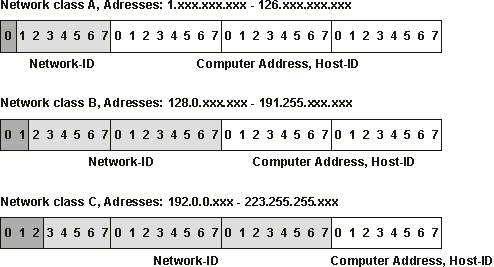Network classes
Three different network classes are distinguished. They determine how many address bits are reserved for the network ID and how many for the node number (e.g. for PCs or Bus Couplers). The difference is located in the first three bits of the IP address.
Network class | Number of bits for the network ID | Enables no. of networks | No. of bits for the node address | Enables no. of nodes per network |
|---|---|---|---|---|
A | 7 | 126 | 24 | 16 777 214 |
B | 14 | 16 382 | 16 | 65 536 |
C | 21 | 2 097 150 | 8 | 254 |
 | Unique IP address An IP address must be unique within the entire connected network! |

 | Identical network class In a communication with another Ethernet devices, the IP address set must have the same network class. Sample: Your PC has the address 172.16.17.55, which means the coupler must have the address 172.16.xxx.xxx (xxx stands for a number between 0 and 255. 0 is usually used by the router/switch and should therefore remain reserved). |
In order to see the PC's own address, the command ipconfig can be entered into a DOS window under Windows NT/2000/XP.